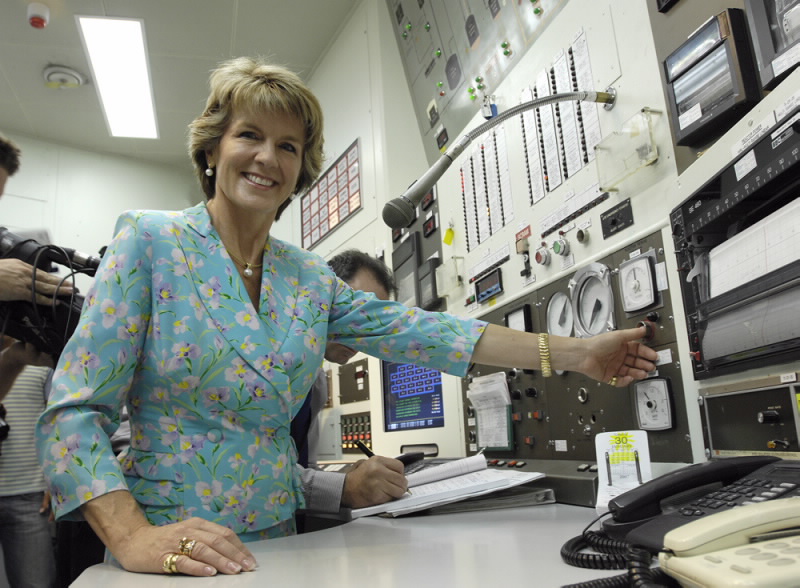The Hon. Julie Bishop MP, Minister for Education, Science and Training initiated the final shutdown of Australia’s first nuclear reactor, HIFAR, while ANSTO staff farewelled an old friend.
 |
| The Hon. Julie Bishop MP, Minister for Education, Science and Training initiated the final shutdown of Australia’s first nuclear reactor. |
“The shutdown sees the end of an era in Australian nuclear science, yet also heralds the beginning of a new one,” said ANSTO Executive Director, Dr Ian Smith. “Closing HIFAR is necessary to make way for Australia’s new OPAL reactor, which will take Australian nuclear science into the twenty-first century.
“OPAL will allow ANSTO to increase its production of radioisotopes using neutron beam techniques, expand its research into areas such as obesity, energy sustainability and genetic defects in children, as well as continue supplying nuclear medicine to half a million Australians each year.”
Current and past staff of HIFAR attended the special ceremony to say goodbye to a reactor which during its lifetime has supplied millions of patient doses of nuclear medicines to Australia, New Zealand and Asia, and allowed cutting-edge nuclear science to take place.
Longstanding staff member Rod Arnold, Reactor Shift Superintendent and HIFAR Training Officer, said it was a sad day for him.
“I’ve worked at HIFAR for nearly 33 years and we’ve had some good times here as it’s been a total team effort in running this amazing piece of equipment safely and effectively,” he said. “HIFAR has had many modernisations over time but still is very unique and an old friend to many of us.
“An immense amount of intellect has gone into maintaining and developing HIFAR, not to mention the neutron beam science it has been adapted to do by ANSTO scientists over the years,” said Rod Arnold. “HIFAR is definitely a piece of Australian history we should be proud of.”
HIFAR went critical on Australia Day 1958 and was officially opened on 18 April 1958 by the then Prime Minister, Robert Menzies, and was based on a British reactor design. Initially, it was used to make radiopharmaceuticals and test materials for the development of nuclear energy in Australia.
However, when the Australian Government in 1972, under Prime Minister Bill McMahon, decided not to proceed down the nuclear energy route, HIFAR was further adapted to conduct neutron beam research into industrial materials and irradiate silicon for the semiconductor industry.
The shutdown initiation today also marks the beginning of the decommissioning process which will entail a step-by-step dismantling of the reactor, ancillary equipment and buildings. This process will take up to 10 years to complete and will be conducted under the watchful eyes of ANSTO’s regulator, ARPANSA, and the International Atomic Energy Agency.
Published: 30/01/2007

